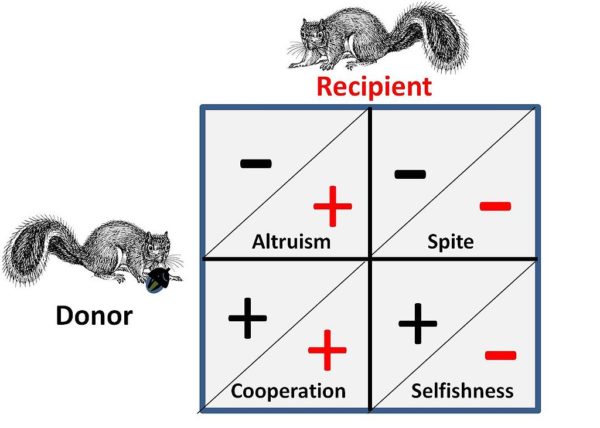
March 9, 2017; The Conversation
Game theory is a powerful tool in understanding the world we live in. By structuring the decision-making process of two or more players in terms of potential payouts, we can illustrate the motives behind their decisions.
In an article published on The Conversation, Dr. Anna Nagurney summarizes the results of an interesting academic paper where she and her coauthors explore nonprofit/NGO responses to disaster relief. In particular, they look at coordination problems that lead to significant congestion of relief supply, much of which is not critical to the relief effort. The congestion forces workers to use their time sorting through donations rather than helping those in need.
Dr. Nagurney and her coauthors show through game theory why good intentions so often end up as outcomes that don’t maximize the aid given for relief. Because of their desire to help and receive recognition for helping, NGOs donate whatever is readily available to give without consulting each other to determine the overall need. Using this framework, the authors find a Nash Equilibrium, an outcome in which all actors choose what is best for them, given the choices of the other actors. This results in duplication of efforts, which ends in an overabundance of supplies that becomes a burden to onsite relief workers.
The authors continue by demonstrating, through a Generalized Nash Equilibrium, the implementation of upper and lower bounds of the supplies that can be donated by an individual NGO. In theory, these bounds are established by a larger NGO or government entity. The authors’ model is based on three main factors motivating NGO behavior: the funds donated due to media exposure, the satisfaction of helping those in need, and the costs associated with moving goods for relief. Implementing these upper and lower constraints—which are shared by all NGOs—while keeping these factors in mind results in maximized relief for those in disaster areas.
Sign up for our free newsletters
Subscribe to NPQ's newsletters to have our top stories delivered directly to your inbox.
By signing up, you agree to our privacy policy and terms of use, and to receive messages from NPQ and our partners.
The use of game theory in modeling firm behavior is not new. The analytical technique saw a renaissance in the economics industrial organization literature in the 1980s. Generalized game theory (which is used by the authors), however, is newer and builds on the foundations laid by game theory. The authors in their paper are using a generalized game theory model to address a common game theory problem—the problem of coordination.
Insofar as their model goes, they seem to do a good job; they make decent, logical arguments for modeling NGO behavior the way they do. Where their argument loses ground is in one of the results their model finds and the implications of their solution—the introduction of a “higher power” to enforce constraints on all NGOs involved:
- First, in the paper, the authors find that with a “Generalized Nash Equilibrium” solution, NGOs do not maximize their utility. In other words, they are not as happy as they would have been were there no restrictions. Even with a common goal of providing relief to those in need, it seems unlikely that NGOs—and, more importantly in this case, their donors— would agree to a new set of rules where they are made worse off.
- Second, the authors’ rule change in the Generalized Nash Equilibrium model requires a higher-up to set bounds on the minimum and maximum quantity of goods an NGO can give. In doing so, the amount of relief is maximized. This creates a new problem: What NGO sets and enforces the bounds? It is difficult to imagine such an NGO providing this service free of charge. Who ends up paying the NGO? Will NGOs compete among themselves to earn the king-of-the-mountain post? What if lower-tier NGOs ignore the bounds? In the case of a government setting the bounds, which government? Even within a single country, there are multiple jurisdictions. Presumably, there is some glory to being the hero, perhaps the opportunity to be reelected. The new set of rules may solve the coordination problem of disaster relief, but it sparks another set of subgames that can result in suboptimal outcomes.
- Finally, and this may seem a rather pessimistic way of looking at the world, there is no real guarantee that disaster relief is a coordination problem, from the perspective of NGOs and donors. Donors and NGOs might not care about offering needed relief, but only care to appear to provide needed relief. This plays into the firm’s utility function as mentioned above, but it merits its own mention here.
Dr. Nagurney and her coauthors validate their model using data from Hurricane Katrina in New Orleans, which is outstanding. If their model didn’t work in their hypothetical, it would certainly have been troubling. They algorithmically determine need based on census and other data. Ultimately, though, it does not seem practical. For the one admittedly large problem it solves, it causes a great deal of other problems.
There are, of course, numerous caveats to this analysis, most of which apply to strength of preferences toward one outcome or another. Since these show up in the model and are math-heavy, this is hardly the forum to discuss them. Suffice it to say that while a little game theory is helpful in almost any analysis of human behavior, this model comes up short in terms of practicality. It is still a rather impressive effort, though. Here is another academic paper exploring the possibilities of using game theory in humanitarian action.—Sean Watterson












